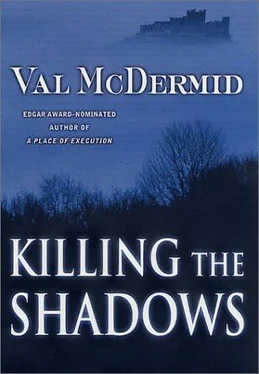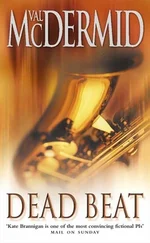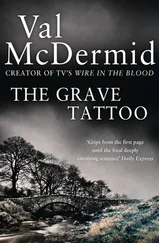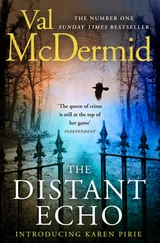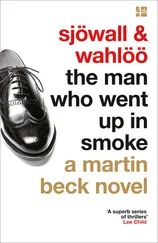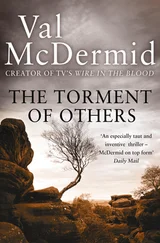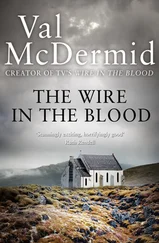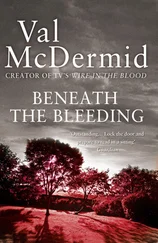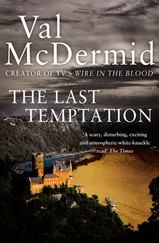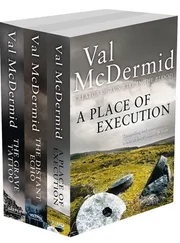As he dressed, Steve tried to put his personal feelings far from the front of his mind. He had important things to do today, and he needed to be clear-headed. But it didn’t work, and as he walked to his car, he knew that whatever broke with the Blanchard case, he wouldn’t settle until he knew what Sarah Duvall was doing.
What Sarah Duvall was doing was wondering why she’d ever imagined that authors’ agents and publishers’ editors would be able to tell her anything about the death threat letters that Kit Martin, Georgia Lester and at least three other crime writers had received.
The five people she’d just had breakfast with had listened with rapt attention to what she had to say. Then they’d dropped their quiet bombshell. “We get over three thousand unsolicited manuscripts a year,” one of the agents had said. “Out of those, we might ultimately take on perhaps a maximum of three new authors. That means there are a lot of unhappy people out there, and frankly, DCI Duvall, if you’d read some of those typescripts, you’d realize we’re not always dealing with the most balanced of individuals.”
“I regularly get abusive letters,” an editor said, backing up the agent. “Usually from people I’ve turned down, but once or twice from authors I’ve dropped from my list because of poor sales. People take it very personally, because writing is a very personal thing. But it never goes beyond that. They let off steam, add you to their mental hate list, they bad-mouth you round the business, but that’s all.”
They’d passed the letters round from hand to hand, commenting only that they seemed rather more hostile than usual. But they all agreed that none of them would have bothered the police, or even their company door security with them. “We’re in a very emotive business,” another of the agents had said. “Feelings run high. But we’re dealing with people who regard words as weapon enough.”
However, Duvall had extracted from each of them a promise that they would take copies of the letters back and check them against any hate mail in their own files on the off-chance that they might spot some congruence. It had been a long shot, so she wasn’t unduly surprised that it hadn’t paid off.
That didn’t stop her feeling disappointed. She hoped it wasn’t an omen for the rest of the day. She didn’t want to end up with egg on her face after an operation as major as the search of Smithfield Market.
It never occurred to her that, indirectly, what she was hoping for was the murder of Georgia Lester.
Terry Fowler looked as relaxed as she had done the day before. She was wearing a thin black cardigan over a white T — shirt and what looked like the same pair of black jeans. She had pulled up a chair next to her so Steve could look over her shoulder at the computer screen. “Interesting results,” she said, her fingers tapping the keys. He noticed her hands were surprisingly broad, with strong fingers that ended in short, blunt nails carefully trimmed, as if to remove the temptation to chew them. She wore a heavy silver ring on the third finger of her right hand. “I was able to use a set of parameters that Fiona’s already developed for serial rapes. It needed one or two modifications, but because I was working with a more or less off-the-shelf package it was a lot quicker than starting from scratch. And since you seemed to be in a bit of a hurry…”
“Habit, I’m afraid. Another day or two probably wouldn’t have made a lot of difference.”
“Urgency’s not a bad habit in your line of business, I imagine,” Terry said, half turning to give him a grin. “You gotta try and get to the bad guys before they do worse things.”
“Something like that.” Steve sighed. “Sometimes it’s more a matter of getting things done before the bureaucrats notice how much of the budget you’re draining.”
“Yeah, right. Well, this particular budget drainage ran the crime linkage program on the files you gave me.” She raised her eyebrows at him. “Including the four that you slipped in to see whether I was doing it properly.”
“That’s not why I put them in,” Steve protested. “It’s not about putting you on the spot, it’s about showing my colleagues that this isn’t a load of mumbo jumbo. It strengthens the value of the results if I can demonstrate that the programme weeds out the cases we know to be irrelevant.”
“Just testing,” she murmured. “It’s OK, I’m not really offended, I understand the principle of control groups…Anyway, having run all the cases through the computer, it appears you do have a cluster here.” Her tone became more brisk as she got into the meat of her results. “Four of the rapes and two of the serious sexual assaults. The Hertfordshire case has a slightly lower probability than the other five, but it still comes in at eighty-seven percent, which I would regard as a definite positive.”
Steve felt a small surge of excitement, though years of practice kept it well hidden. “And how does that translate in terms of the geographical profile?”
“Let’s take it stage by stage,” Terry said, her right hand clicking the mouse over dialog boxes. A map of North London spread out before them in monochrome. She tapped a couple of keys and the screen flooded with colour, iridescent greens, blues, yellows, purples and a patch of burgundy. “This is what we get from the first two. Add in the third and fourth…” More five-finger exercises on the keyboard. Now the patch of red was more clearly defined, the colour clearer. But a second, purplish-red zone had also appeared slightly to the north of the original scarlet. Steve, who had seen Fiona do this enough times to be able to glean some meaning from what was in front of him, noted that the main highlighted area covered a dozen streets in the northern part of Kentish Town. The second patch was up towards Archway.
“Add in the fifth, and that second patch gets less significant,” Terry continued. “But when we introduce the sixth incident, see what happens.” The original red sector changed scarcely at all, but the purple area grew noticeably more reddish in tone.
“And what do you conclude from that?” Steve asked, pretty sure he knew what was coming next.
Terry turned her head and grinned at him. “Same as you, I expect.” She picked up a pencil and pointed to the main red zone. “If we have correctly identified a genuine cluster, then chances are your man lives in this area here. It’s possible that he lives in the other hot spot, but I’d be more inclined to think that’s where he works. When an offender is at the start of his career, he tends to stick closer to home. And if we look at the first two cases, the only hit we get is this section here that simply intensifies in probability the more cases we input.”
She leaned back in her chair and swivelled it around so she was half facing Steve. Without looking at the screen, she hit a couple of keys. “And when we add in the Susan Blanchard murder, let’s see what happens.”
No amount of self-control could prevent Steve from revealing his shock. “What did you just say?”
Terry grinned. “You look like a stunned cod,” she said. “I thought that would shake you.”
“Have you been discussing this with Fiona?” Steve demanded, hiding his feelings behind a sharp tone.
“Nope. I worked it out all by myself. When you said there was another case to add in to the series, I figured it had to be something pretty serious. And the only thing more serious than violent rape is sexual homicide. Also, it had to be an important case for you to be prepared to lash out on crime linkage and geographic profiling. Probably one that had stalled, because this sort of process isn’t your first port of call. Since you were interested in North London cases, chances are you were looking at a rape-murder north of the river, as yet unsolved. Put it all together and it comes up with Susan Blanchard.” She spread her hands in the theatrical manner of a magician revealing the rabbit in the hat.
Читать дальше
Конец ознакомительного отрывка
Купить книгу
